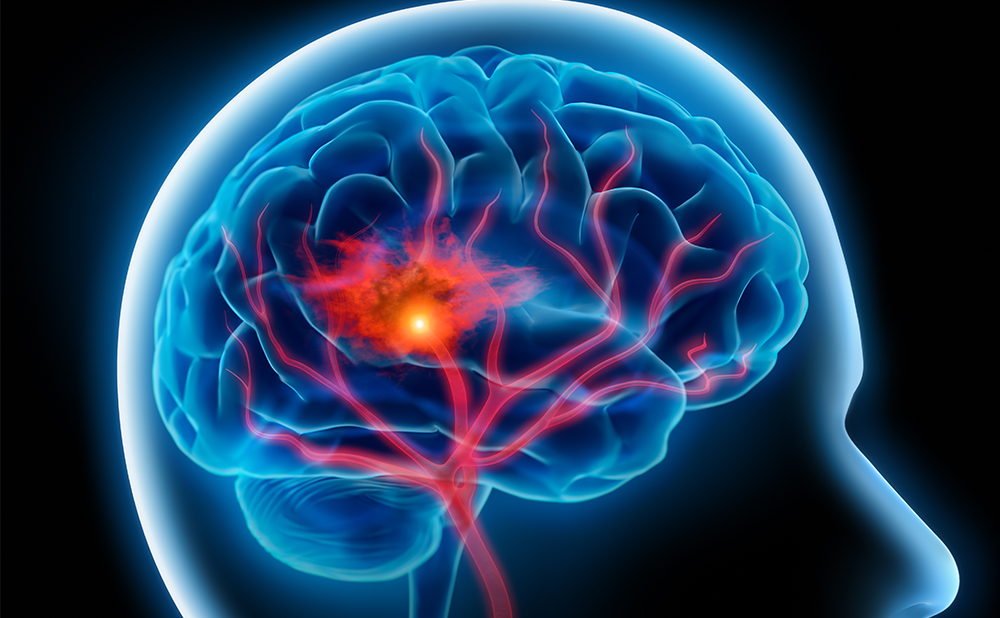The application of computer-assisted image guidance technology to these surgical procedures allows creation of new methods to address these challenges by providing the needed 3-D orientation that ultimately improves accuracy, efficiency, and safety. The concepts described below represent the initial step of combining computer-assisted image guidance technology with standard endoscopic surgical procedures, which may ultimately change many of the customary methodologies for performing current surgical procedures.
Thoracic Spinal Disorders
The treatment of thoracic disc herniation remains a difficult clinical challenge, particularly when it is located anterior to the spinal cord. Many thoracic disc herniation problems are small and laterally located, causing only chest-wall pain; they are not a threat to causing paralysis, are self-limited, and resolve.
However, some of these disc herniations remain problematic primarily when they are in a strategically difficult location directly ventral to the spinal cord (see Figure 1). These previously necessitated a highly invasive operative procedure through an anterior or anterior-lateral approach; this required a large surgical incision through the chest wall (i.e. thoracotomy) resulting in a long painful recovery period.
Thoracic Endoscopy Development
Recent interest in endoscopic procedures emerged due to technological advances with endoscopic imaging and improved surgical instruments and techniques in the late 1980s. The addition of digital video technology to endoscopy further advanced the field, with precision images displayed on brilliant video monitors providing the surgeon with a clear view of the surgical field. Thoracic endoscopic procedures have developed in recent years in other disciplines, such as pulmonary surgery involving the lungs and related structures, from basic, less difficult procedures; they have now evolved significantly, with the ability to perform most complex procedures using less invasive endoscopic techniques.2–5 The efficacy of these procedures is equivalent to open procedures, but with significantly less post-operative pain and shortened hospital stay.
Computer-guided Endoscopic Neurosurgery in the Thoracic Spine
Abstract
Overview
There seems to be broad agreement that the brightest hope for delivering enhanced patient care and better outcomes in surgery relies on technological advances, in the right hands. Some of the more promising approaches, emphasizing imaging and robotics, were recently reviewed.< UP>1 Neurosurgery, due to its special challenges, has always been at the forefront of new technology adoption. Thoracic spinal surgery is an excellent example, since it often has both technical and anatomic challenges due to the need to intervene within the farthest reaches of the chest cavity. Recent endoscopic surgical techniques have resolved many old problems while creating others, mainly due to difficult orientation utilizing a 2-D imaging-based endoscopic procedure within a complex 3-D structure.
Article
Further Resources
2. Share This

Trending Topic
Intracranial radiosurgery, no matter the means or methods of administration, is predicated on a core set of principles, including head immobilization and precise delineation of the treatment target. For some five decades after Leksell introduced the concept of stereotactic radiosurgery in 1951,1 rigid head fixation via an invasive device was an integral component towards these ends. […]
Related Content in Neurosurgery

Studying cerebrospinal fluid (CSF) is essential for diagnosing many central nervous system (CNS) diseases, including infection, inflammation and malignancy. Lumbar puncture is a relatively safe and routinely performed procedure for extracting CSF.1 In this review, we summarize the essential CSF ...

Infections and their prevention have long been a significant concern for surgeons around the world. Surgical site infections (SSIs) represent a considerable burden for both patients and providers alike, as they often result in significant morbidity and mortality, as well ...

Cerebral cavernous malformations are commonly found in deep regions of the brain, such as the thalamus and brainstem.1 While posing a significant risk of hemorrage,2 they also present a surgical challenge as the rates of morbidity and mortality are high.1,3 ...

Recently released guidelines on the use of disease-modifying therapies (DMTs) in patients with multiple sclerosis (MS) include guidance on starting, switching, and stopping treatment. The guidelines, which were produced by a multidisciplinary panel and endorsed by the Multiple Sclerosis Association ...

The importance of recognizing and including cognition as a key factor to consider when ensuring comprehensive care for individuals with multiple sclerosis (MS) cannot be over emphasized. Unfortunately, despite it being accepted as a common symptom, cognitive function in MS ...

There has been an explosion of data in the field of Alzheimer’s disease (AD), not only from clinical studies but also studies that generate hypotheses and opportunities that may accelerate drug development. In order to make optimal use ...

This year, the Alzheimer’s Association International Conference (AAIC) took place in Chicago, IL, US, July 22–26, 2018. During this major annual international meeting dedicated to the advancement of Alzheimer’s disease (AD) and dementia science, an impressive array of the ...

Dural arteriovenous fistulas (dAVF)s are unique to the neuraxis as the arteriovenous shunt site is contained within the dural leaflets. They may be discovered incidentally or in a workup of a variety of potential neurological sequelae, including pulsatile tinnitus, ...

Brain arteriovenous malformations (bAVMs) are rare congenital lesions that confer a lifelong risk for hemorrhage. Treatment options for these lesions include microsurgical resection, embolization, and radiosurgery, alone or in combination. The goal of bAVM intervention is to eliminate the risk ...

Surgery for Occlusive Atherosclerotic DiseaseExtracranial-intracranial (EC-IC) bypass for revascularisation in the setting of atherosclerotic occlusive disease has remained a topic of intense interest and scrutiny over the last four decades. The underlying premise of EC-IC bypass in this setting is ...

What is Trigeminal Neuralgia? Trigeminal neuralgia (TN) is a vexing clinical problem for a number of reasons, not least of which is clearly defining its clinical spectrum. A commonly accepted definition of TN is that of a facial pain syndrome ...

Neuromodulation Devices Vagus Nerve Stimulation Neuromodulation Devices Vagus Nerve Stimulation Vagus nerve stimulation (VNS), first used for seizure treatment in the 1880s, was approved by the FDA in 1997 after decades of animal studies demonstrating reduction of chemically-induced seizures,1,2 and subsequent ...
Latest articles videos and clinical updates - straight to your inbox
Log into your Touch Account
Earn and track your CME credits on the go, save articles for later, and follow the latest congress coverage.
Register now for FREE Access
Register for free to hear about the latest expert-led education, peer-reviewed articles, conference highlights, and innovative CME activities.
Sign up with an Email
Or use a Social Account.
This Functionality is for
Members Only
Explore the latest in medical education and stay current in your field. Create a free account to track your learning.

